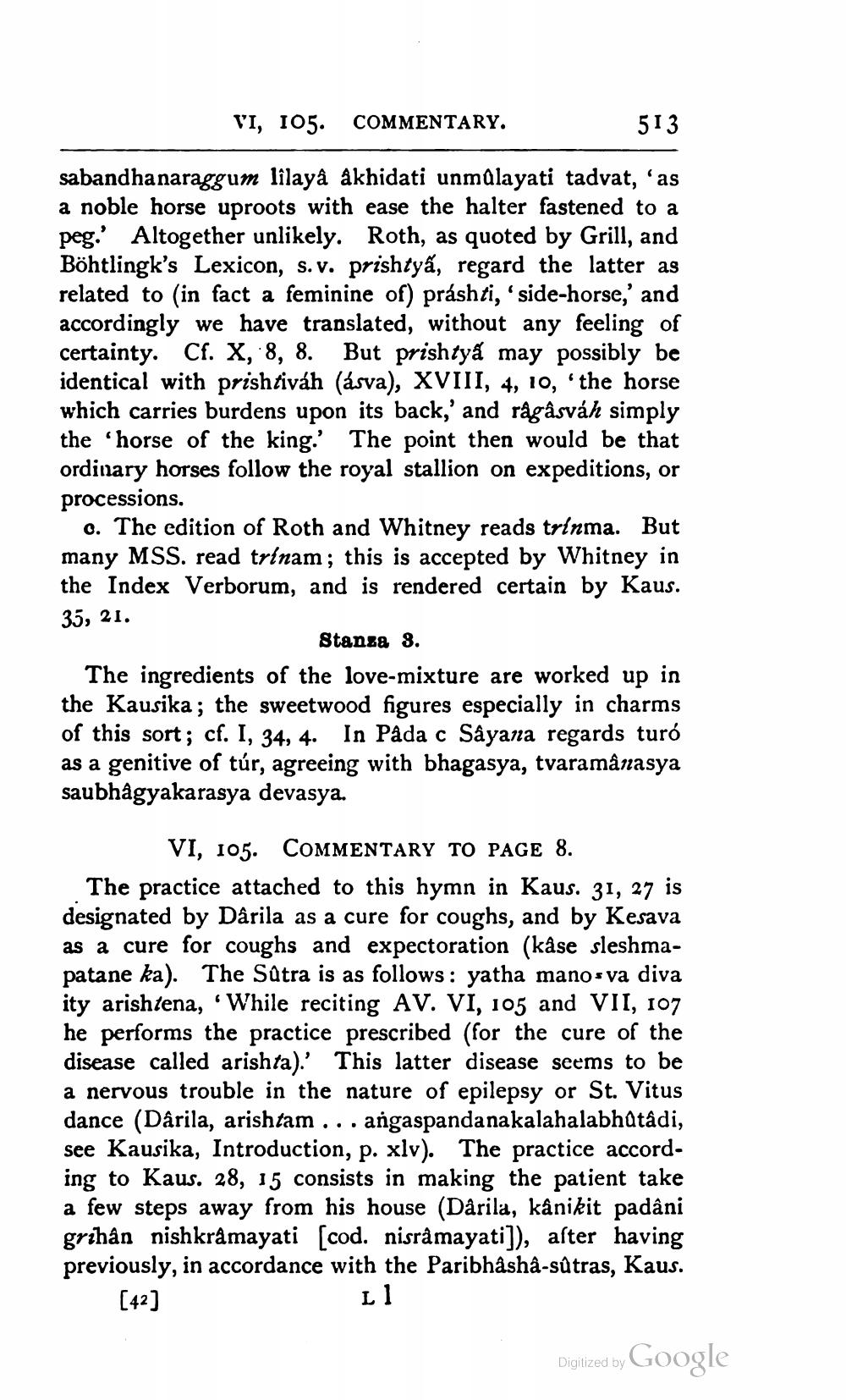________________
VI, 105. COMMENTARY.
513
sabandhanaraggum lilaya akhidati unmalayati tadvat, 'as a noble horse uproots with ease the halter fastened to a peg.' Altogether unlikely. Roth, as quoted by Grill, and Böhtlingk's Lexicon, s.v. prishtyã, regard the latter as related to (in fact a feminine of) práshti, 'side-horse,' and accordingly we have translated, without any feeling of certainty. Cf. X, 8, 8. But prishtyä may possibly be identical with prishtiván (ásva), XVIII, 4, 10, the horse which carries burdens upon its back,' and rågåsváh simply the 'horse of the king. The point then would be that ordinary horses follow the royal stallion on expeditions, or processions.
0. The edition of Roth and Whitney reads trinma. But many MSS. read trinam; this is accepted by Whitney in the Index Verborum, and is rendered certain by Kaus. 35, 21.
Stansa 3. The ingredients of the love-mixture are worked up in the Kausika; the sweetwood figures especially in charms of this sort; cf. I, 34, 4. In Påda c Sâyana regards turó as a genitive of túr, agreeing with bhagasya, tvaramânasya saubhagyakarasya devasya.
VI, 105. COMMENTARY TO PAGE 8. The practice attached to this hymn in Kaus. 31, 27 is designated by Darila as a cure for coughs, and by Kesava as a cure for coughs and expectoration (kåse sleshmapatane ka). The Sútra is as follows: yatha mano sva diva ity arishtena, "While reciting AV. VI, 105 and VII, 107 he performs the practice prescribed (for the cure of the disease called arishta).' This latter disease seems to be a nervous trouble in the nature of epilepsy or St. Vitus dance (Dârila, arishtam ... angaspandanakalahalabhatâdi, see Kausika, Introduction, p. xlv). The practice according to Kaus. 28, 15 consists in making the patient take a few steps away from his house (Darila, kânikit padâni grihân nishkrämayati (cod. nisrâmayati]), after having previously, in accordance with the Paribhasha-sútras, Kaus. [42]
LI
Digized by Google




